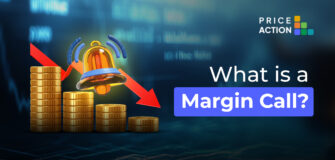7 Effective Foreign Exchange Risk Management Strategies
Share

It isn’t uncommon for beginner Foreign exchange traders to consider that creating money through online Foreign exchange buying and selling is easy.
However, it’s a procedure that can take time, dedication, commitment, and persistence, if you wish to be effective and lucrative within the Foreign exchange market over time.
You cannot just open a situation inside your buying and selling platform without considering the buying and selling conditions set from your Foreign exchange broker, the currency risk, and also the buying and selling risk that may affect your invested capital.
You should also apply techniques and tools to handle your hard-earned money and risks – should you not do individual things, you would not be buying and selling – you’d be gambling.
Take a look at these foreign exchange risk management tips.
#01 ONLY INVEST MONEY YOU DON’T NEED
It could seem apparent, however, the first rule in currency buying and selling, or another type of buying and selling, for instance, would be to only risk the cash you really can afford to get rid of. Many traders, especially beginners, skip this rule simply because they think that it “won’t occur to them”.
If buying and selling were really like gambling in a casino, you would not take the money you need to the casino to bet on black, right? Well, it’s the same with buying and selling – don’t take unnecessary risks by utilizing the money you have to live.
Why?
Because it’s easy to lose all of your buying and selling capital, and next, because buying and selling with funds you reside on will prove to add extra pressure and emotional stress for your buying and selling, compromising the decision making process abilities and growing the likelihood of making mistakes.
This currency exchange market is extremely volatile and unpredictable, so it’s easier to trade “conservative amounts” out of your disposable earnings.
#2 CONSIDER YOUR RISK TOLERANCE
Right before beginning exchanging, you need to determine your risk tolerance, based on:
- Your Age
- Your Knowledge About Forex Trading
- Your Experience
- Simply How Much You’re Ready To Lose
- Investment Goals
Knowing your risk tolerance isn’t just about assisting you to sleep better during the night, or stress less about currency fluctuations.
#3 SET YOUR RISK/REWARD RATIO TO A MINIMUM OF 1:3
Being aware of risk/reward ratio (RRR) will certainly improve your odds of becoming lucrative overtime, setting limit orders (stop-loss and take-profit) that safeguard your capital.
A RRR measures and blogs about the distance involving the access point as well as your stop-loss and take-profit orders.
Let’s say that you’re investing in the EUR/USD.
If the distance between your entry-level and your stop-loss is 50 pips, and the distance between your entry point and your take-profit is 150 pips, then you would be using a RRR of 1:3, because you’re risking 50 pips to earn 150 pips (150/50 = 3).
The risk/reward ratio is a necessary tool to set your stop-loss and take-profit orders depending on your risk tolerance, and every wise trader should control the downside risk.
Even though determining a RRR depends on each trader’s risk tolerance, it’s common to use a risk/reward ratio of 1:3, where you expect to earn 3 times what you’re willing to lose.
#4 TAKE CONTROL OF YOUR RISK PER TRADE
When considering risks, it’s also wise to consider your exchanging capital.
You need to only invest a little part of your buying and selling capital per trade: a great beginning point is always to not invest greater than 2% of the available capital per trade.
If you have $10,000 in your Forex trading account, the maximum loss allowable would be $200 per trade.
Determining the risk per trade is a helpful tool if you go through a losing streak, so then you can better protect your trading capital, and avoid large drawdowns in your trading account.
#5 KEEP THE RISK CONSISTENT
Most beginners will expand their positions when they’re making money, which is how the account easily gets wiped out. Keep the risk consistent!
Simply because you’ve designed a couple of winning trades doesn’t imply that the next will probably be profitable.
Don’t become over-confident and fewer risk-averse, as that can result in you altering your hard-earned money and risk management rules without solid reasons.
Whenever you labored in your buying and selling plan, you’d set up rules to determine a good effective size for the positions. Case a measure in creating an effective buying and selling method, now you have to stay with and follow neglect the plan!
#6 UNDERSTAND AND MANAGE LEVERAGE
The Foreign exchange marketplace is a leveraged market, due to its high liquidity.
Leverage means that you could invest more income than your initial deposit, because of margin buying and selling. Your broker is only going to request you to reserve a little area of the total worth of the positioning you need to open as collateral.
When utilizing leverage, your profits could be magnified rapidly, but don’t forget the same pertains to your losses. This is why you ought to know how to leverage and margin buying and selling work, in addition to the way they impact your general performance and buying and selling.
Foreign exchange traders are frequently enticed to make use of high leverage to create significant profits, but when you’re over-leveraged one quick change on the market could easily wipe you out of trouble.
#7 TAKE CURRENCY CORRELATIONS INTO ACCOUNT
You must realize that currencies are associated with one another, or correlated.
Being aware of Foreign exchange correlations can help you better take control of your Foreign exchange portfolio’s exposure by reduction of the general risks. Visit here to see the 16 most widely used currency pairs.
Correlation represents a stride of methods one asset evolves with regards to another.
If two assets are positively correlated, this means they tend to evolve within the same direction, while if they’re negatively correlated, they’ll evolve in opposite directions.
To make use of Forex correlations to your benefit, you have to remember a couple of things:
Avoid opening several positions that block out one another
For example, should you go lengthy around the EUR/USD and also the USD/CHF, you may expect both currency pairs to evolve in opposite directions, which is similar to getting no buying and selling position inside your account.
Why?
Since the USD can be used once like a base currency (USD/CHF), and when because the quote currency (EUR/USD), meaning when the USD strengthens against its major counterparts, then your EUR/USD goes lower, as the USD/CHD will increase – the evolution of 1 exchange rate canceling the other.
- Avoid opening positions with similar base currency, or quote currency
For example, should you go lengthy around the EUR/USD, the AUD/USD, and also the GBP/USD, you may expect these currency pairs to become positively correlated because everyone has the same quote currency, the USD.
This means that whenever the USD strengthens/weakens, your portfolio will increase or lower.
- Be familiar with commodity currencies
Commodity currencies represent currencies that relocate compliance with commodity prices since the countries they represent are heavily-based upon the export of those goods.
Typically, when the cost of goods strengthens, then your currencies from the commodity producers will increase – and vice-versa.
The primary correlations to understand would be the Canadian Dollar (CAD) and oil, the Australian Dollar (AUD) and gold/iron core, along with the New-Zealand Dollar (NZD) and made of wool and milk products.
To enhance your Foreign exchange buying and selling performance, you’ll know your exposure: some currency pairs move together, while some evolve in opposite directions. The bottom line is to diversify your portfolio to mitigate risks.
These tips are just the cornerstone to better manage your risk – as you research further, you’ll find other Forex trading tools and techniques for beginners you can use to improve your trading strategy.
Before using a live trading account, try to back-test your trading plan on a demo account, and improve your strategy if needed.
If you still haven’t read our previous blog post about FOREX RISK MANAGEMENT, visit the following link to check it out – http://test-pafx.priceactionltd.com/forex-risk-management/











